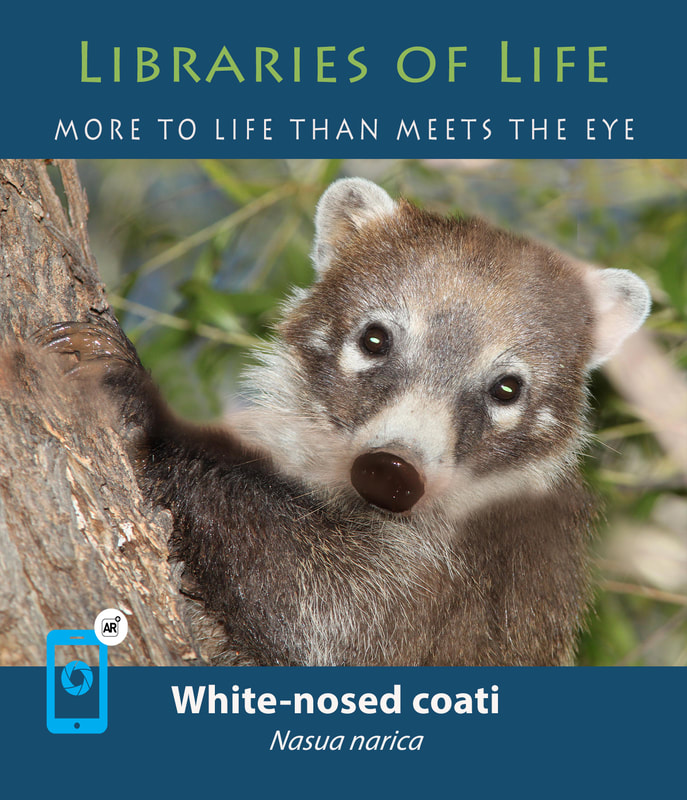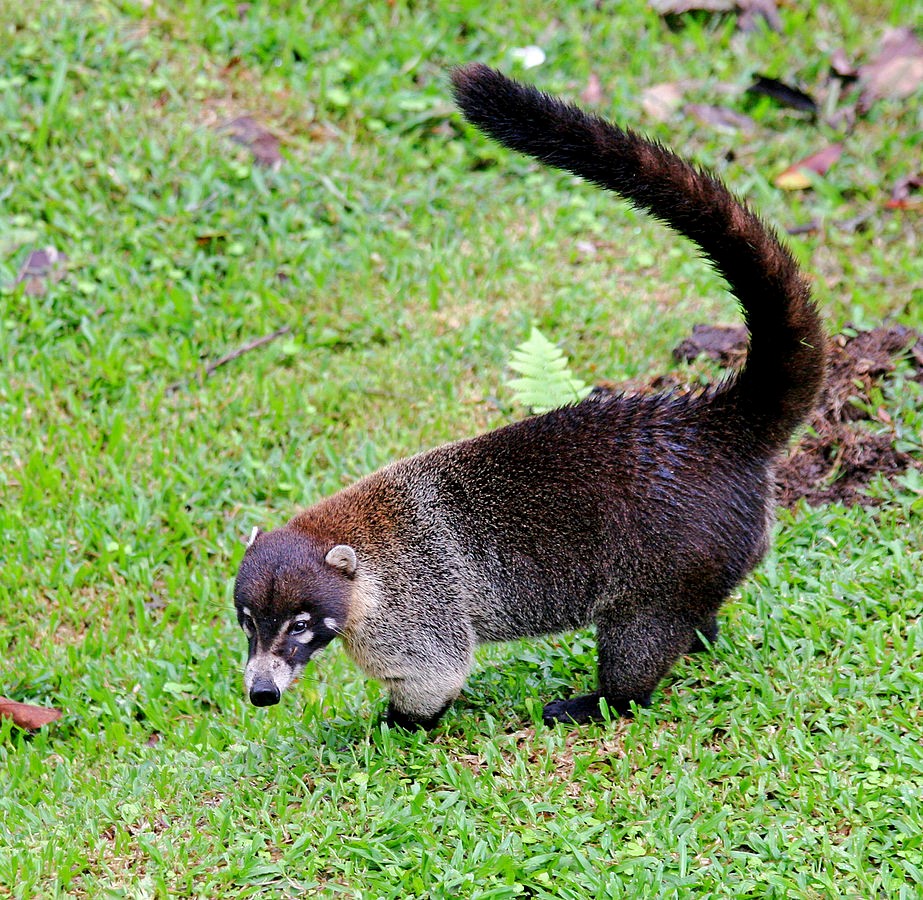White-nosed coati: Did you know?
|
Click to download card
Nasua narica
video credit Mark McCabe, BLM. |
The white-nosed coati is a member of the raccoon family. Full grown, the coati is about 4 feet long (2 foot body and 2 foot tail). Coatis have sharp claws and a long white snouts. In the United States they are found in mountain forests and woody canyons in southeastern portions of Arizona, the southwest corner of New Mexico, and in southwest Texas.
The white-nosed coati is omnivorous, meaning that they eat both plants and animals. Their diet includes lizards, snakes, carrion, rodents, nuts, and fruits, especially prickly pear. Coati females and their young live in packs of 5-40 individuals. The male coati is solitary but will join a pack to mate. After a male has mated, the females band together and force him to leave the group. Females have a litter of 2-6 young about 75 days after mating. The life expectancy of a white-nosed coati is about 14 years. Although the white-nosed coati spends a lot of time on the ground looking for food, it is also a very good tree climber and swimmer. Coatis will usually spend their nights sleeping in trees. |


